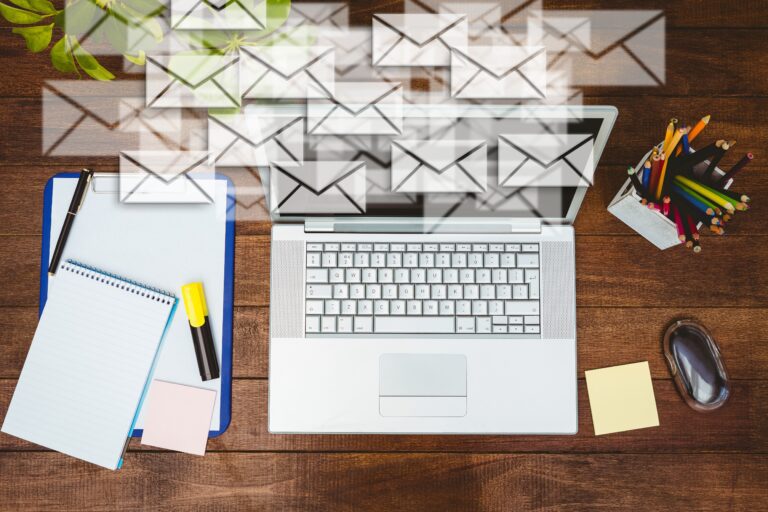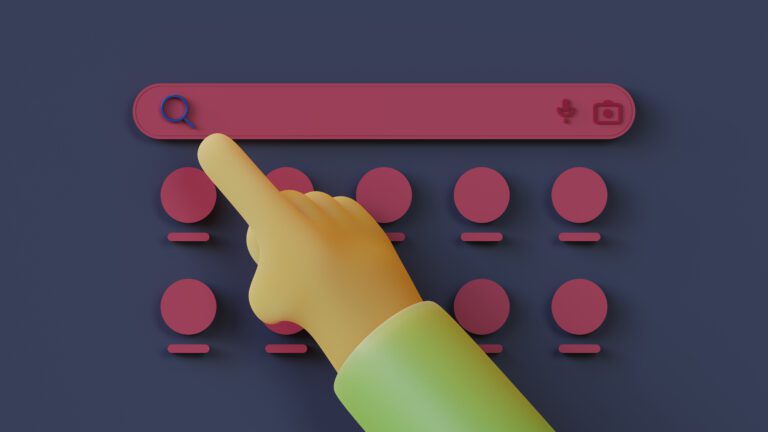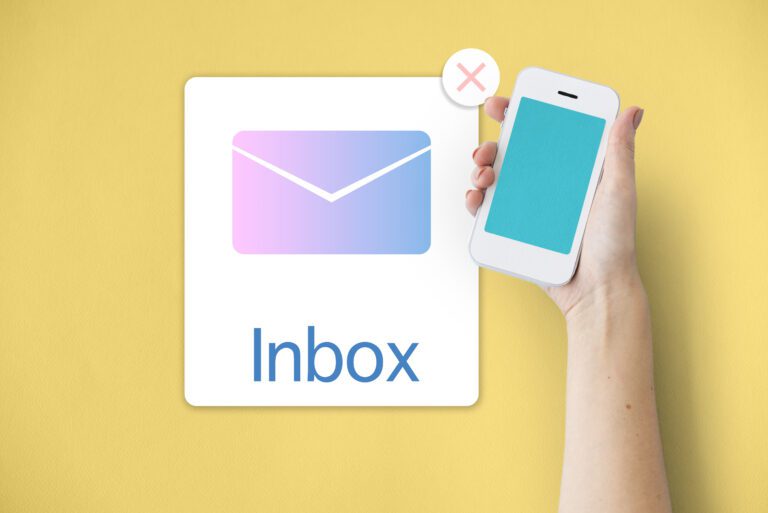Why Customer Retention Should Be Your Primary Focus

I hope you enjoy this blog post. If you want Hello Bar to grow your leads, click here.
Author:
Ryan Bettencourt
Published
October 4, 2018

What’s more important for a business success – acquiring new customers or retaining existing ones? It’s a classic sales and marketing question and the one that doesn’t have a straight and simple answer. Though customer acquisition is the lifeblood of any company, numerous researches have proved that customer retention is absolutely critical to profitability as the existing customers are actually worth more than newly acquired ones.
In fact, according to Gartner Group, as much as 80% of your company’s future revenue will come from just 20% of your existing customers. While theusual customer acquisition vs. retention debate will most probably run forever, the vital question is: should customer retention be a core focus and a top priority for your business? Let’s find out.
What is Customer Retention and How to Calculate Retention Rate?
Customer retention refers to the activities and actions a business takes to increase the number of repeat customers and increase the profitability of each of them. In short, it’s anything a business does to get customers continue buying products or services from them. The goal of customer retention programs is to help companies retain as many current customers as possible and maximize revenue from each one, often through various customer loyalty initiatives.

Understanding and knowing how to calculate your customer retention rate is essential to understanding how well your organization is performing in terms of generating customer loyalty. Simply put, customer retention rate is the percentage of customers you keep relative to the number you had at the start of a certain period. It can be measured monthly, quarterly, or annually depending on the business. To calculate your customer retention rate (CRR), simply use the following formula: CRR = ((E-N)/S) X 100
The information you need:
- Number of customer at the end of a period (E)
- Number of new customers acquired during that period (N)
- Number of customers at the start of that period (S)
Let’s say, for example, you started with 1000 customers, ended with 1100, and added 200 during the period. Here’s what the formula will look like: ((1100-200)/1000) x 100 = 90%. Ideally, as a business, you would surely like to reach 100% CRR, which would mean that you didn’t lose a single customer. However, that’s next to impossible. The realistic number you should be aiming for is 90% or at least 85% for your business to remain scalable and profitable.
Why Customer Retention Should Be a Priority For Your Business
“Every company’s greatest assets are its customers, because without customers there is no company.” – Michael LeBoeuf

While generating leads and acquiring new customers is essential, getting existing customers to continue to buy from you is a lot easier and more cost-effective. Returning customers tend to spend more and buy more often, as they are already familiar with your products or services. Additionally, they spread positive word-of-mouth and refer your business to others. But on top of that, retaining current customers helps to boost ROI and increase your business profitability.
If you still think customer retention plays a relatively minor role in growing your business, take a look at the following statistics that might make you rethink your customer acquisition and retention strategy:
- Acquiring a new customer can cost 6 to 7 times more than retaining an existing customer. (Bain and Co.)
- On average, loyal customers are worth up to 10 times as much as their first purchase. (White House Office of Consumer Affairs)
- Existing customers are 50% more likely to try new products, and spend 31% more than new customers. (The Nielsen Survey)
- The probability of selling to an existing customer is 60 – 70%. The probability of selling to a new prospect is 5-20%. (Marketing Metrics)
- 66% of US consumers spend more on brands to which they are loyal, 55% of US consumers recommend brands or organizations to which they are loyal to their family and friends, 12% will even publicly endorse or defend a brand or organization on social media. (Accenture)
- The cost of bringing a new customer up to the same level of profitability as an old one is up to 16x more. (SocialAnnex)
- Businesses which boosted customer retention rates by as little as 5% saw increases in their profits ranging from 5% to a whopping 95%. (Bain and Co.)
- Building loyalty with 5% more customers would lead to an increased average profit per customer of between 25% and 100%. (The Loyalty Effects
5 Proven Customer Retention Strategies That Keep Customers Coming Back

Having an effective customer retention strategy in place is a must for any business that wants to establish sustainable growth and long-term profitability. Now that you know how important customer retention is, how do you improve customer retention rates and keep your current customers engaged and happy? Take a look at the following 5 basic customer retention strategies and techniques to help you boost customer retention and bring your customers back for more:
1. Improve Your Customer Service and Experience
“Merely satisfying customers will not be enough to earn their loyalty. Instead, they must experience exceptional service worthy of their repeat business and referral. ” – Rick Tate
With the ever rising expectations of today’s empowered consumers who have more choices, greater knowledge and higher demands, the significance of providing outstanding customer service and delivering great experiences should not be underestimated. In fact, 96% of consumers say customer service is important in their choice of loyalty to a brand, according to Microsoft’s 2017 State of Global Customer Service Report. This number is simply too high to ignore. Here’s what can be done to improve customer service and experience:
Expand Your Customer Support Options
Digital-savvy consumers expect to receive service on their own terms – anytime, anywhere. If your business still relies solely on phone and email to handle customer support queries, it’s high time to scale your customer support options with the channels your customers actually want to use for interacting with your brand. Say, for example, WhatsApp, you can integrate your customer service with the WhatsApp Business API; you can provide convenient communication with your customers on a platform they’re already familiar with.
Microsoft’s report claims that 90% of consumers now expect brands and organizations to offer an online portal for self-service. While the Software Advice study found that 63% of millennials prefer to have their basic customer support questions answered via live chat over traditional channels.

Offer Omni-Channel Service Experience
As consumers demand seamless interactions regardless of the various channels, devices or interactions they choose, providing omnichannel customer service experience has become almost critical to their satisfaction. Microsoft’s report also revealed that 66% of global consumers actively use 3 or more channels. As they tend to jump from channel to channel, especially during the course of a single support inquiry, brands must be empowered to ensure a smooth consumer engagement experience across multiple touch points. An omnichannel contact center software solution will help navigate through these various channels while also improving customer experience.
Respond to All Support Requests and Make it Fast
You might be amazed to discover that despite all the talk about the importance of providing quick and efficient customer service, a huge number of companies completely fail to do so. A recent 2018 Customer Service Benchmark Report by SupperOffice shows that 62% of companies do not respond to customer service emails at all, only 20% of companies are able to answer questions in full on the first reply, while the average response time to handle a customer service request is over 12 hours.
Go The Extra Mile and Exceed Expectations
As they say, there are no traffic jams along the extra mile. Empower your frontline employees to delight your customers, deliver wow experiences and exceed their expectations, whenever possible, by doing something they won’t usually expect. A recognition program can further motivate employees to go the extra mile by regularly acknowledging their efforts and contributions, ensuring they stay engaged and committed to exceptional customer service.
Brands like Zappos, Amazon and Ritz-Carlton know how to do it right. After all, customer experience is defined by how you make customers feel. And while all three components of customer experience—success, effort, and emotion—have a strong effect on customer loyalty, the Temkin Group found that emotion is the most important element.

2. Start a Customer Loyalty Program To Boost Customer Retention
According to ClickFox, 62% of consumers don’t believe that the brands they’re most loyal to are doing enough to reward them.
One of the best ways to foster loyalty and increase customer retention is by offering incentives to your customers through loyalty programs. In fact, loyalty programs can have a massive impact on retention because they motivate customers to purchase more often in order to earn valuable rewards. As a result, it becomes a profitable exchange for both you and your customers – they get more value when buying more of your products or services, and you benefit from their repeat business.
These days, the majority of consumers actually believe that loyalty programs are a big part of their relationships with companies. The Loyalty Report 2018 released by Bond Brand Loyalty states that consumers spend 37% more with brands when they are a loyalty program member. It also found that loyalty programs have a higher influence on Gen Z and Millennial consumer spend than on Boomers (66% vs. 58%).

Take a look at some of the examples of effective loyalty programs:
- A simple point system (frequent customers earn points for every purchase, and then translate them into rewards, such as discounts or freebies)
- A tiered points system (the more loyal your customers are to your brand, the greater rewards they will receive)
- A fee-based program for VIP benefits (customers pay a monthly or annual fee for VIP membership that can offer free shipping, bigger discounts, or exclusive products)
- A coalition program (partnering with another businesses to give your customers more opportunities such as co-branded deals or discounts in your partners’ store)
- A game program (a loyalty program based on a game that offers customers gifts, discounts or special deals)
- A non-monetary program (based on your customers’ values and focused on charities supporting animal rights organizations, art initiatives, educational programs etc.)
- A cash back program (an incentive program where a certain percentage of the amount spend by customers is paid back to them)
- An ambassador program (providing customers with freebies or VIP benefits in exchange for spreading the word about your business on social media or review websites)
- A hybrid program (a combination of more than one type of loyalty programs such as points and tier system that work well together)

However, getting a customer to sign up for your loyalty program is only the first step. The recent 2017 COLLOQUY Loyalty Census research shows that 53% of U.S. consumers identified ‘easy to use’ as the main reason for participating in a loyalty program, following ‘gives me great discounts’ (39%) and ‘easy to understand’ (37%). Conversely, the top reason for abandoning a loyalty program was ‘it took too long to earn points of rewards’, a concern cited by 57% of respondents, following ‘it did not provide rewards I was interested in’ (53%).
3. Become a Trusted Advisor For Your Customers
“You don’t earn loyalty in a day. You earn loyalty day-by-day.” – Jeffrey Gitomer
Just because a customer has made a purchase from you doesn’t mean you should stop building relationships with them. If you manage to become a trusted advisor for your customers by consistently offering valuable, educational content, you will gain a significant advantage over your competitors. Instead of being just another vendor, you can become something more important. Ultimately, this differentiation will help you retain customers for as long as you maintain the relationship well.

Remember that your customers aren’t just looking to buy your products or services – they’re looking to accomplish certain goals, while your product or service is merely a tool that allows them to do it. Focusing on creating content that answers questions, helps to overcome challenges and solve problems your customers might have is a great way to prevent customers from switching, earn their loyalty and improve customer retention. Here’s how to do it:
Educate Your Customers Through Emails
According to the WBR Digital and Emarsys Research, 80% of professionals consider that email drives stronger customer retention than any other channel. Emails give you the opportunity to maintain a meaningful conversation with your customers after the initial purchase. For example, sending thoughtful customer service emails can proactively address common concerns, share tailored advice, and keep customers informed about new products and updates.
They will surely appreciate receiving helpful recommendations on new information and products that will help them achieve better results. Make sure though that each message you send adds value to your customer’s experience.
Publish Valuable Content on Your Blog
Informative articles and infographics, tutorials and how-to guides, case studies, interviews and stories, reviews, videos and podcasts – are the examples of value-added content you can publish on your corporate blog. In fact, companies that do moderate blog posting between 1-2 times per month have 67% more sales opportunities than companies that do not blog (Source: InsideView). Your blog content should be engaging, relevant to your audience and provide useful information to your customers.
Use Live Webinars to Inspire Customers
Webinars allow you to share a live video with your target audience, which humanizes your brand and gives your customers a chance to get to know more about your brand, your products or services. Webinars can also be a powerful customer retention tool as they help you improve customer engagement, strengthen relationships, establish trust and credibility with your customers, and stand out as an authority and expert in your niche or industry.
4. Engage Your Customers Through Social Media
“Social media will help you build up the loyalty of your current customers to the point that they will willingly, and for free, tell others about you.” – Bonnie Sainsbury

Social media is a great avenue for building brand loyalty with your audience and deepening the bond customers already have with your company. The Conversocial report indicated that 86% of consumers are more likely to be more loyal to a brand that engaged them on social media. The Sprout Social survey also found that when a brand responds or reaches out to them on social media, 70% of people are more likely to use a brand’s product or service, while 65% have more brand loyalty. Here are 3 basic strategies for improving customer retention rates with social media:
Build Relationships With Your Followers
Identify the social media platforms your customers are using and make sure to maintain active presence on those platforms by consistently sharing relevant content to keep your customers engaged. According to the 2018 Sprout Social Index survey, consumers are interested in a wide variety of content formats from brands on social: 60% want to see posts that showcase new products or services, 59% want to see educational posts, 56% want to be entertained and 49% want to be inspired by brands on social.
Use Social Media as a Customer Service Channel
As social media is increasingly being used as a customer service platform, businesses can no longer afford to ignore social customer service. Gartner reported that failure to respond via social channels can lead to a 15% increase in the churn rate for existing customers. On the flipside, by simply answering a social media complaint businesses can increase customer advocacy by as much as 25% (Convince and Convert). Response time can also make a big difference. According to Twitter’s own data, 60% of consumers expect brands to respond to their customer service requests within an hour.
Listen to What Your Customers are Saying
Do you monitor what your customers are saying about your brand online? Social listening should be an important part of your social media activity. Monitoring brand mentions allows you to discover both good and bad feedback about you, and timely respond, when it’s appropriate. Hootsuite, Mention and Brand24 are some of the examples of social media listening tools that can provide immediate notifications of your brand mentions and ensure that you’re always engaging in the right conversations.
5. Ask For Customer Feedback and Act On It
“The complaining customer represents a huge opportunity for more business.” – Zig Ziglar

The voice of the customer is a truly very powerful customer retention tool that should not be undervalued. You can only retain customers if you know what they really want from your business, products or services – and you can’t assume you know that for sure if you haven’t reached or asked them. Collecting customer feedback takes out the guesswork and shows you what you’re doing right and, more importantly, what you’re doing wrong, allowing you to make better business decisions. Take a look at a few types of customer surveys that can help companies gather valuable insights and improve retention:
Product feedback
Product surveys help you understand how your customers feel about your product and its features, and shed light on buyer issues or concerns that are costing you customers – and money. Whether you create a physical product or deliver a service, product feedback surveys will give you the exact information necessary to drive product improvements, increase sales and ensure long-term customer loyalty.
Customer satisfaction
Customer satisfaction surveys help businesses measure customer satisfaction at specific moments in the customer journey, such as after a purchase or a customer support interaction. The results will show you common customer obstacles, likes and dislikes, and whether customer service expectations are being met. Use this information to serve your customers better and improve customer experience.
Net Promoter Score
Net Promoter Score (NPS) surveys ask a simple question: On a scale of 0 to 10, how likely are you to recommend our business to a friend or colleague? The results place respondents into three distinct categories – Promoters, Passives, or Detractors. By spotting Detractors (unhappy customers who score 0-6), you can proactively reach out to them to find out what can be improved in order to retain them.

Through feedback you can re-engage a customer who’s about to give up on your brand. Even complaining customers with negative experiences can actually turn into loyal ones if you manage to implement changes based on their feedback. The research conducted by Apptentive revealed that 97% of consumers are somewhat likely to become more loyal to a company that implements their feedback, while 55% of consumers are not likely to continue being a customer of a company that ignores their feedback.
Conclusion
While both customer acquisition and retention are important in today’s hyper-competitive market environment, retaining current customers should become a high priority for every business that wants to succeed, grow in profitability and win over the fierce competition. Since your loyal customers will always come back for your products or services, they are obviously your most valuable business asset that deserves explicit investment and care to generate long term benefits.
Is customer retention a priority for YOUR business? What is your most effective customer retention strategy?
Author Bio:
Mary Shulzhenko is a digital marketer, content strategist and a copywriter. She is passionate about writing on customer service, customer experience, small business, marketing and a variety of other business topics. She provides the original content for LiveAgent, an award-winning and the most reviewed help desk software for SMBs in 2018. You can find her on LinkedIn.




